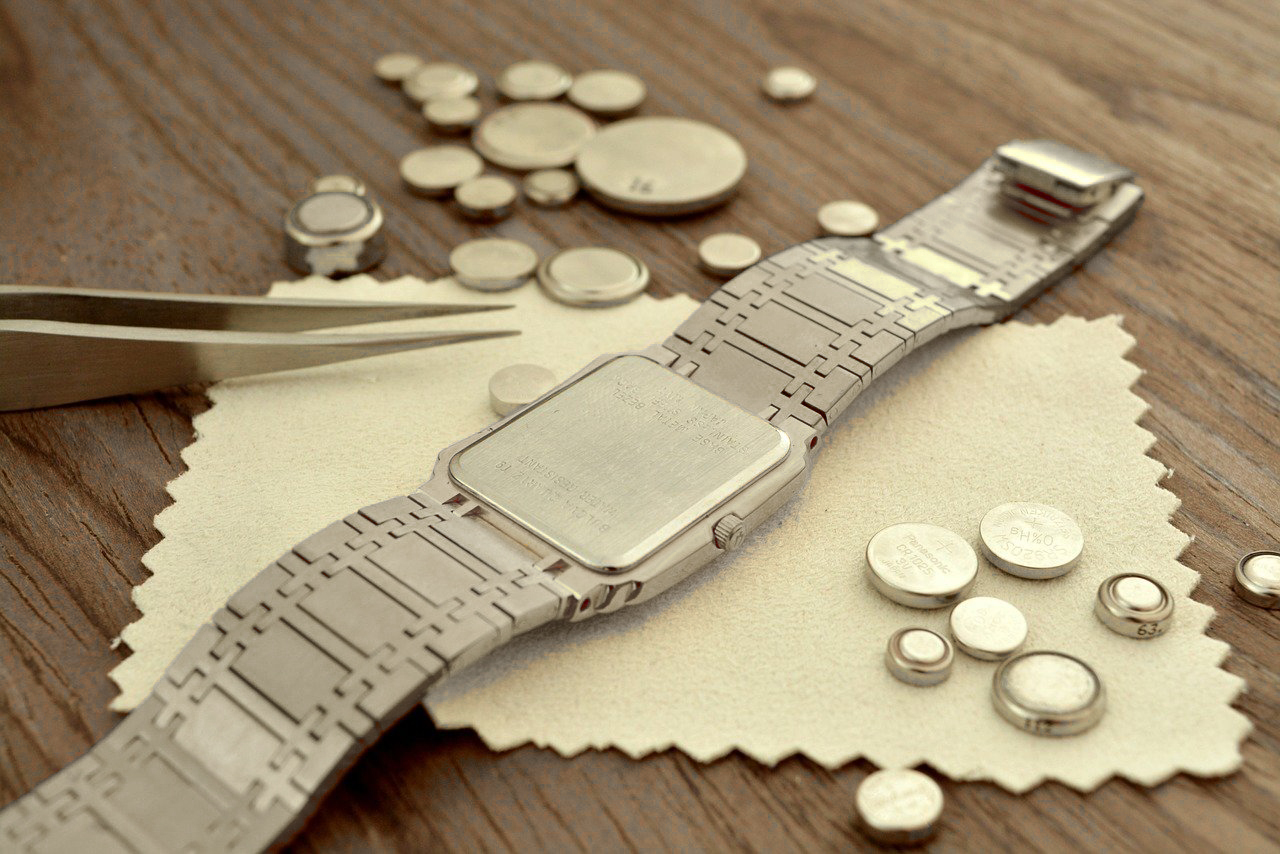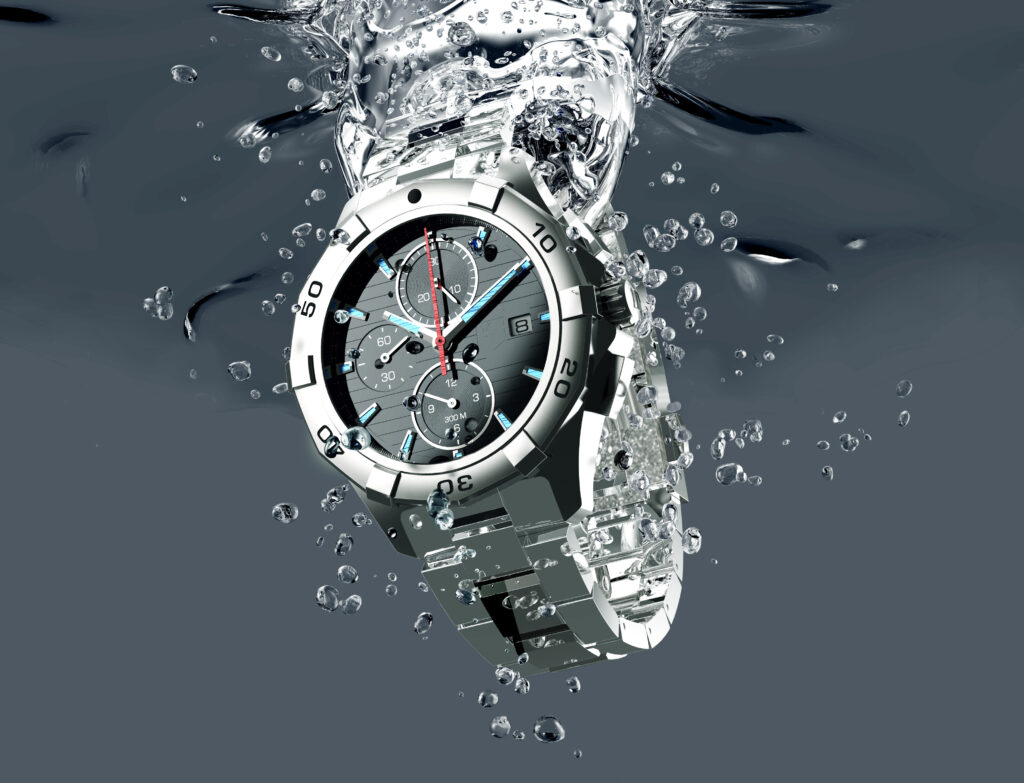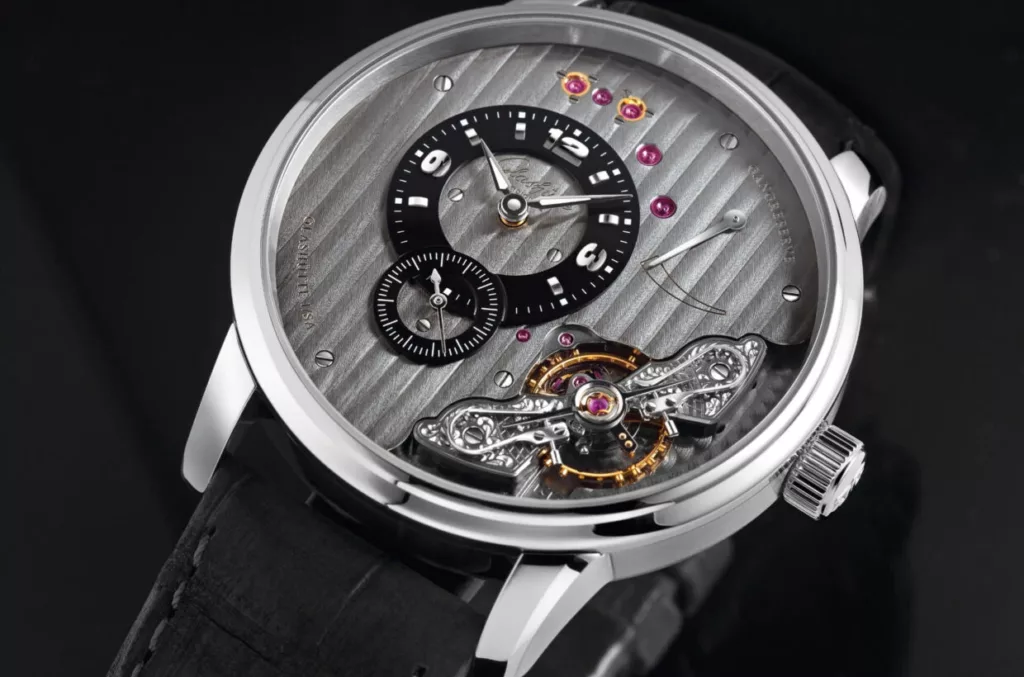Saltwater and Watches

Seawater can dry out or even damage your watch’s seals, which may allow moisture to penetrate the watch and cause it to lose its water resistance.
Therefore, always check whether your watch is actually suitable for swimming.
If you are wearing a sports or diving watch: don’t forget to rinse your watch with fresh water after a day at the sea.
Water Resistance
The legal regulation regarding the water resistance of wristwatches is as follows:
A watch is considered “water-resistant” if no water penetrates it when exposed to rain, sweat, and submersion in water at a depth of 1 meter for over 30 minutes.
Important:
“Water-resistant” or “waterproof” does not mean that the watch is suitable for swimming or diving.
It only means that simple activities like washing your hands will not damage it.
The meter markings on your watch do not indicate how deep you can dive with it, but rather the level of pressure your watch can withstand under laboratory conditions.
1 bar= 10m
Please refer to the following table both when purchasing a watch and when considering your activities:.
| 30m = 3bar: | 50m = 5bar: | 100m = 10bar: | 200m = 20bar | >200m = >20bar | |
| Splash-resistant watch | ⚫ | ⚫ | ⚫ | ⚫ | ⚫ |
| Suitable for hand washing, showering, or bathing | ⚫ | ⚫ | ⚫ | ⚫ | |
| Suitable for sports, swimming, snorkeling, skiing | ⚫ | ⚫ | ⚫ | ||
| Suitable for scuba diving | ⚫ | ⚫ | |||
| Professional diving watches with maximum safety | ⚫ |
- 30m = 3bar: Splash-resistant watch
- 50m = 5bar: Suitable for hand washing, showering, or bathing
- 100m = 10bar: Suitable for sports, swimming, snorkeling, skiing
- 200m = 20bar: Suitable for scuba diving
- >200m = >20bar: Professional diving watches with maximum safety
Keep in mind that watches can be damaged by rapid temperature changes. For example, after sunbathing, you should not jump directly into cold water with your watch, as the sudden temperature shock can cause the material to contract, pushing water past the seals into the case.
Always remove your watch before going into a sauna.
Common Problems with Mechanical Watches
Mechanical watches cannot be as precise as quartz movements, so small deviations in time are normal. Differences of 4 to 6 seconds per day are considered acceptable.
Between 9:00 p.m. and 3:00 a.m., small gears advance the date of your watch. During these 6 hours, you must never adjust the date using the quick-set function, as this can cause severe damage to the gear mechanism.
When setting a perpetual calendar, always follow the operating instructions. An incorrectly set watch often cannot be reset manually and usually requires complex servicing at an authorized service center.
Quartz Movements and battery replacement

In principle, you should only have your watch battery replaced by a professional watch shop. There, they will also check whether the water resistance stated on the back of your watch is still guaranteed after replacement.
Having the battery replaced by a professional ensures that neither poor-quality nor incorrect batteries are used.
Every watch movement requires the exact battery type, which is identified by a special number. To the naked eye, batteries may look identical, but they often differ by minimal size variations.
Batteries that are not replaced regularly can leak and severely damage the movement with acid.
For this reason, do not leave quartz watches lying unused in a safe for years.


